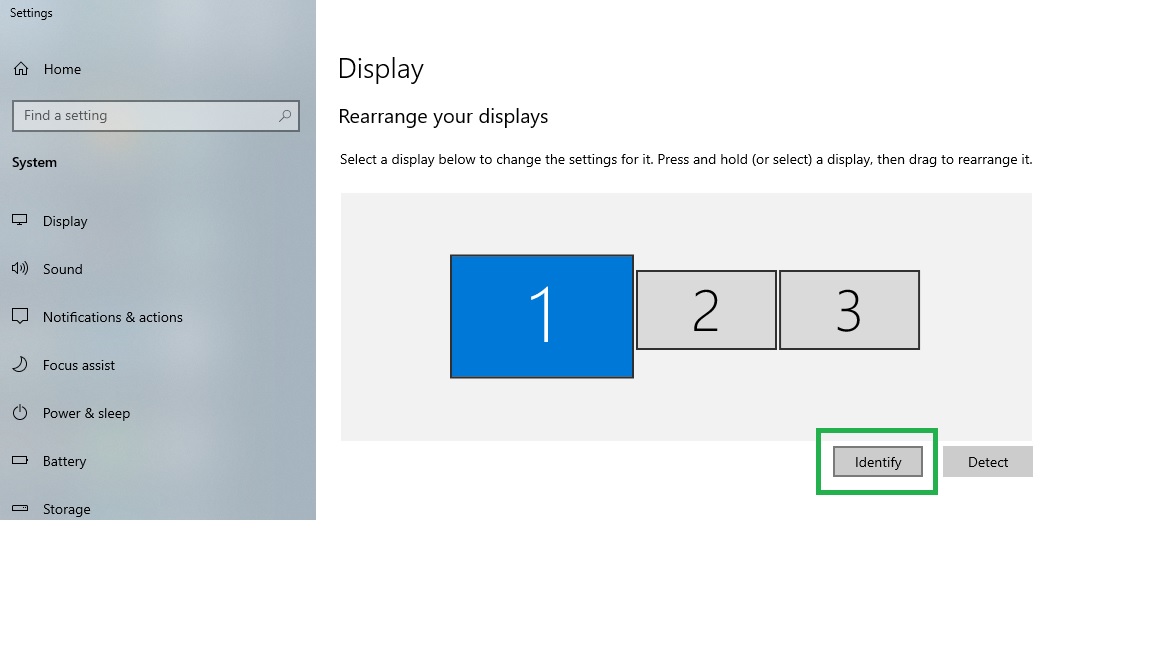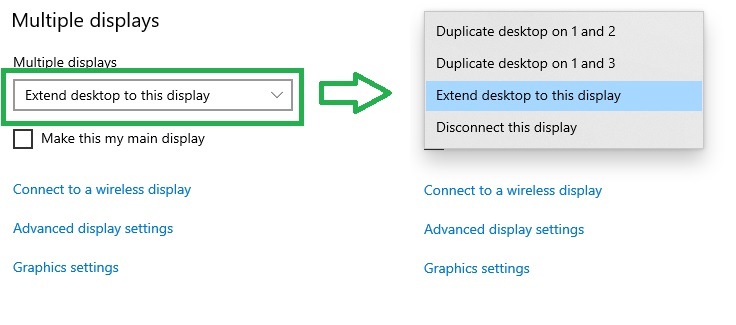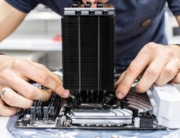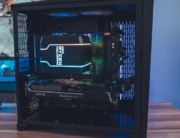Home / Handy Tips /

Running multiple monitors off your PC or laptop makes life a lot easier when you’re working from home, and for gaming or graphic design setups, it goes without saying that this is a must have. Using multiple monitors saves a lot of time toggling through various open windows and multiple tabs, and you can easily click and drag browser tabs and applications from one screen to another.
We’ve put together this simple, step by step how-to guide on how to connect two monitors on Windows 10, to help you get up and running with multiple displays.
Step 1: Prep your monitors
The very first step in how to connect two monitors is to position them on your desk where you want them to sit once plugged in, and ensure you can easily reach the back connections. It’s worthwhile spending time working out where you’ll want your monitors positioned once connected, as they’ll be taking up a lot more desk space.
You’ll want a good ergonomic flow so there are no awkward angles from your seated position. Also work out how you can make your cables sit tidily in relation to your power point or power board.
Step 2: Connect your monitors
Plug each monitors’ power cable into your power point or power board, and then plug in the display cables for each monitor. Because monitors come with multiple ports, you’ll need to see what cables you need – the most common ports are HDMI, VGA and DVI.
You may need an adaptor (or two) depending what ports you have available on your PC or laptop for your display connectors. Adaptors and display cables are available in retail stores, and you don’t need to use the same cables for each – you could use HDMI in one and VGA in another, if you don’t have multiple ports of the same nature on your PC.
Now that you’re all plugged in, turn on your PC to start setting them up.
Step 3: Arrange your monitors
Most of the time arranging multiple monitors is simple, but you will need to know how to tweak the display settings, as generally Windows 10 will default to duplicating your screen across all monitors, rather than extending it. Extending your desktop across the displays is usually the preferred option, as you then can use each monitor independently.
To change the display settings, right click on your desktop and choose Display Settings. Click Identify to see which screen is where (this will determine how your mouse cursor flows from one screen to another). In the image below, the two monitors are connected to a laptop, so it’s identifying three screens. If you’re setting up two monitors on a PC, you’ll see two rectangles – one for each monitor.
You can move the screen boxes around by clicking and dragging them, to reorder so your mouse cursor flows correctly. This is important if you’re connecting two monitors to a laptop and you have the laptop sitting under the screens.
You may see that one or more of the display boxes are smaller than another; this shows that two of the screens in the image are a different resolution than the other.
Once you’ve arranged them how you want them, click Apply.
Step 4: Adjust the display settings (extend/duplicate)
Scroll down the Display settings screen until you reach the section Multiple displays. If Windows 10 has defaulted the display setting to duplicate, and you want it to extend, click the down arrow next to the current setting, and change it to Extend desktop to this display.
You can also change which of your monitors is the main display (the one that apps and new browser windows open in by default) using the tick box Make this my main display underneath the multiple display settings. Make sure you’ve scrolled back up and selected the display box that you want to be the main display, then scroll back down and tick this box.
Step 5: Done!
That’s it – we’ve covered how to connect two monitors in Windows 10. This process is the same if you add a third monitor (provided your PC or laptop’s graphics card can support this many external monitors).
Generally, connecting multiple monitors is this straightforward, but there are times when it can be troublesome, particularly when it comes to adjusting your screen resolution in display settings. If you’re having trouble setting up your monitors and can’t get it to work right, then it’s time to call the experts. The team at Computer Cares is happy to help with setting up your monitor displays, and any other equipment configurations that you need. We also offer friendly and knowledgeable advice on buying new equipment and devices, to help you get the very best from your home or office setup.
Need help with setting up your PC or laptop?
Computer Cures are the experts in setting up new equipment including monitors and all other devices and peripherals. For setup support and consultation services, give us a call on 1300 553 166 or fill out our contact form; we’re here to help.











Leave A Comment